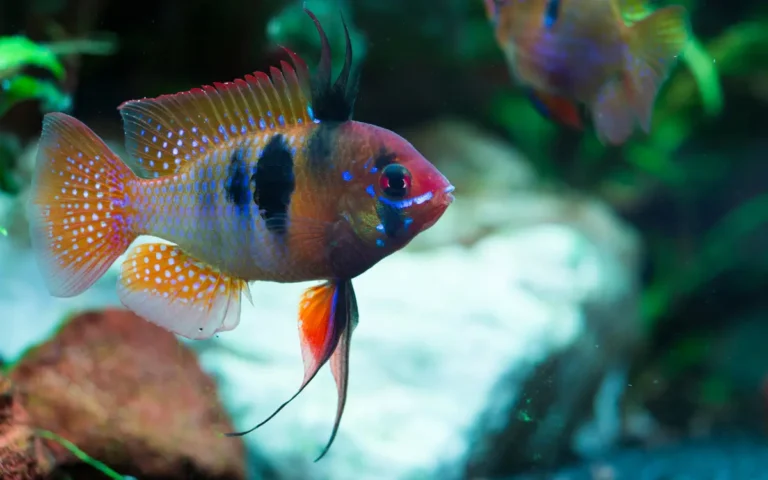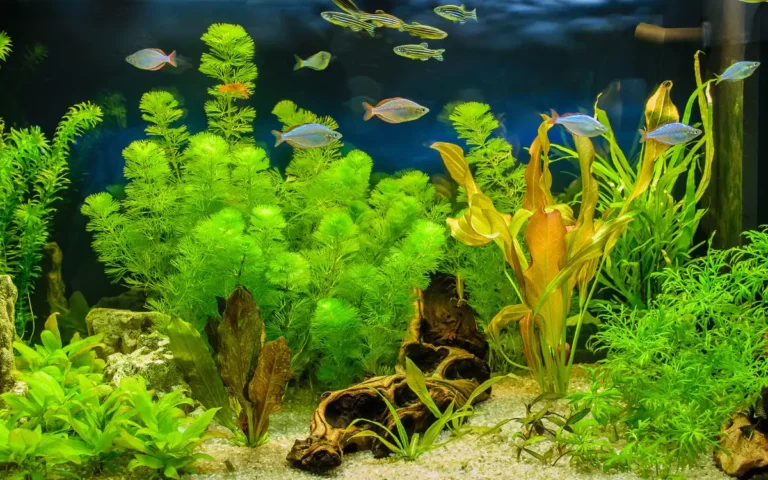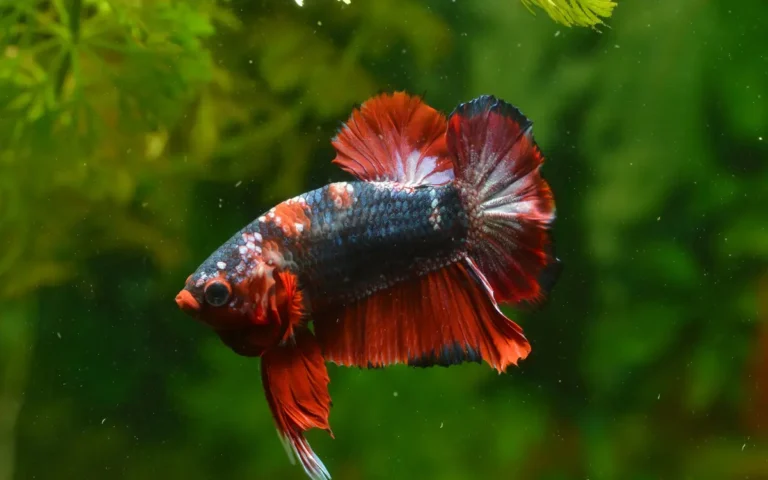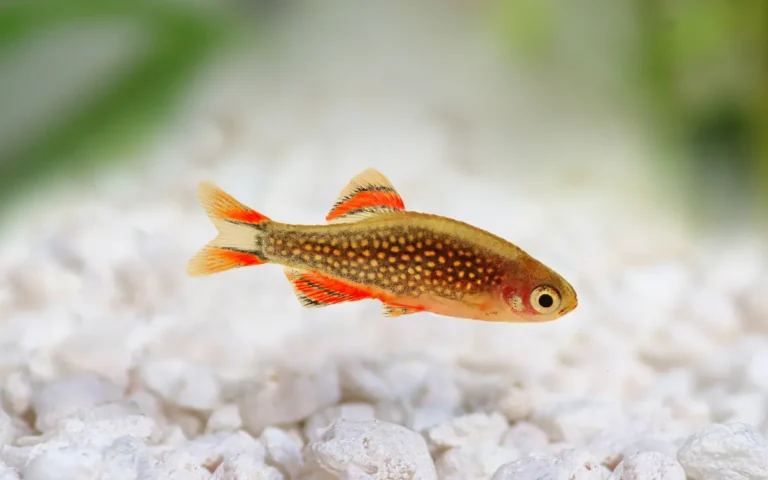Angel fish: A Guide to Keeping

Angel fish, with their graceful fins and striking colors, are popular freshwater fish ideal for aquariums. They add beauty as a community fish aquatic setup.
Today we will explore there Care,feeding and breeding guide that hlpe you to maintain there life.
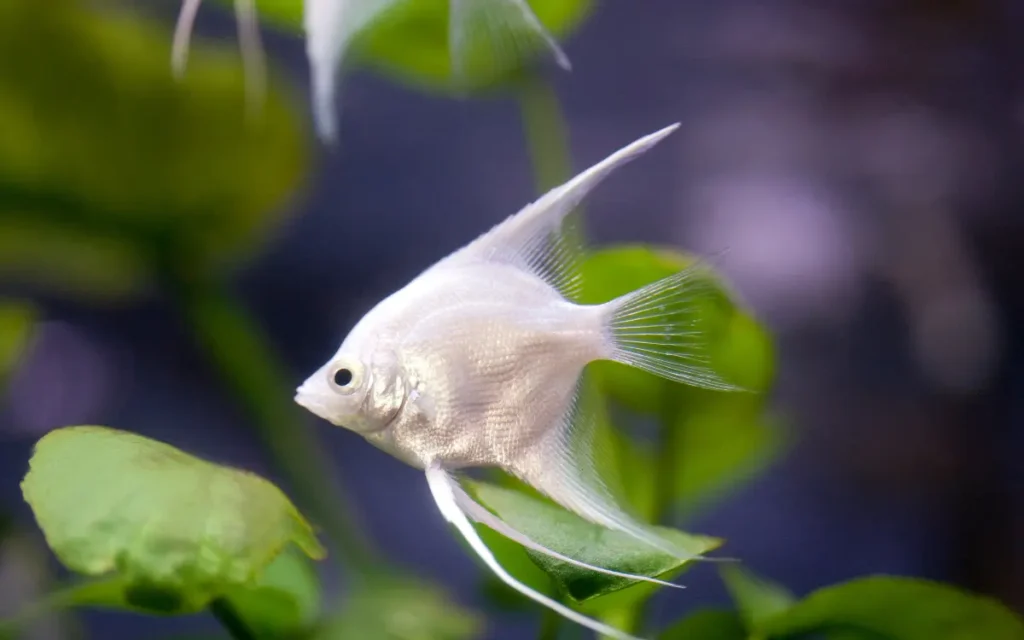
| Attribute | Details |
| Family | Cichlidae |
| Aggressiveness | Semi-aggressive |
| Minimum Tank Size | 20 gallons |
| Life Span | 10-12 years |
| Diet | Omnivorous (flakes, pellets, live, and frozen foods) |
| Size | Up to 6 inches |
| Compatibility | Best with peaceful, similarly sized fish |
| Temperament | Generally peaceful but can be territorial |
Best Angelfish Fish Tank for Beginners
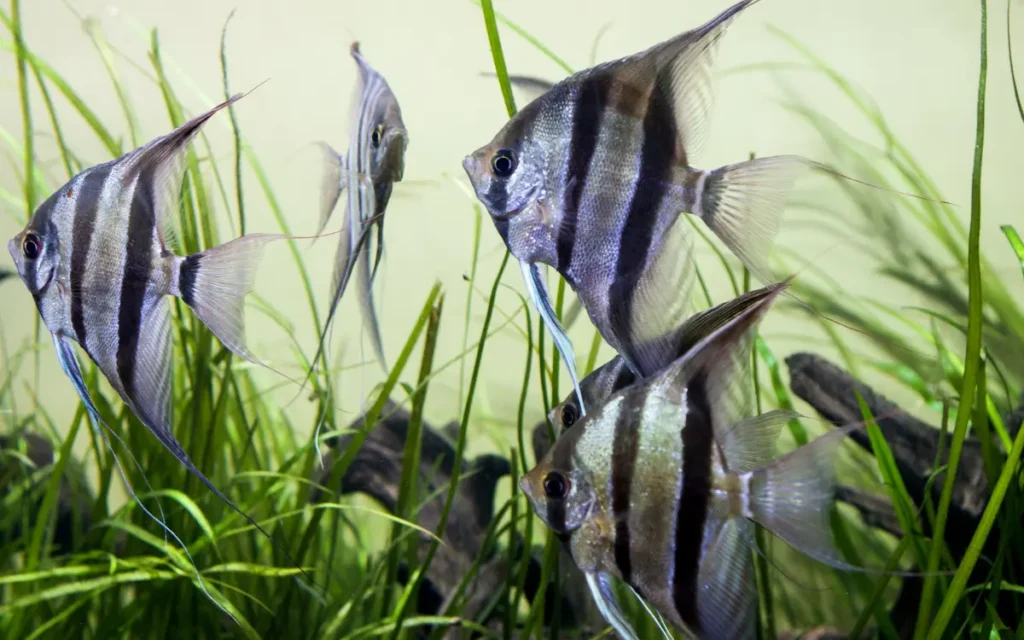
Tank Size:-When choosing a tank for your Angelfish, size matters. A minimum of 20 gallons is recommended, but larger tanks (30 gallons or more) are ideal to provide ample swimming space and to help maintain water quality.
Tank Shape:-Angelfish prefer tall tanks because they have a vertical body shape and enjoy swimming up and down.
A taller tank mimics their natural habitat and allows them to display their beautiful fins fully.
Substrate and Decorations:-Choose a soft, fine substrate like sand or small gravel to mimic their natural riverbed environment.
Add some live plants, driftwood, and rocks to create hiding spots and simulate their natural habitat. Be sure to leave enough open space for swimming.
Filtration:-A good filtration system is crucial to maintain clean and healthy water. Angelfish thrive in well-filtered tanks with moderate water flow.
A canister filter or a hang-on-back filter with adjustable flow is recommended.
Water Parameters:-Angelfish prefer slightly acidic to neutral water (pH 6.5-7.5) with a temperature range of 75-82°F (24-28°C).
Regular water testing and maintenance are essential to keep these parameters stable.
Lighting:-Provide moderate lighting for your Angelfish tank. Too much light can stress the fish, while too little can hinder plant growth.
An adjustable LED light with a timer is ideal for maintaining a balanced environment.
Maintaining Angelfish Fish Health
Diet:- Angelfish are omnivores and thrive on a varied diet. Provide a mix of high-quality flakes or pellets, supplemented with live or frozen foods such as brine shrimp, bloodworms, and daphnia. This variety ensures they receive all necessary nutrients.
Water Quality:- Regular water changes are essential to keep your Angelfish healthy. Change 20-25% of the tank water weekly to remove waste and maintain water quality.
Use a water conditioner to remove chlorine and other harmful chemicals from tap water.
Tankmates:- Angelfish can be semi-aggressive, especially when breeding or if the tank is overcrowded. Choose peaceful, similarly sized tankmates to avoid conflicts.
Good companions include tetras, gouramis, and corydoras catfish. Avoid fin-nipping species like barbs.
Health Monitoring: Regularly observe your Angelfish for signs of stress or disease. Common symptoms include clamped fins, white spots, and unusual swimming behavior.
If you notice any issues, promptly address them with appropriate treatments and water changes.
Breeding:-If you’re interested in breeding Angelfish, provide a separate breeding tank with slightly warmer water (around 82°F or 28°C) and a flat surface for egg-laying.
Once the eggs are laid, remove the parents to prevent them from eating the eggs.
| Type of Food | Examples | Frequency | Benefits |
| Flake Food | High-quality Angelfish flakes | Daily | Balanced nutrition, easy to digest |
| Pellet Food | Sinking pellets, slow-sinking pellets | Daily | Nutrient-rich, promotes healthy growth |
| Live Food | Brine shrimp, daphnia, blackworms | 2-3 times per week | Enhances color, natural diet simulation |
| Frozen Food | Bloodworms, brine shrimp, mosquito larvae | 2-3 times per week | High protein content, easy storage |
| Vegetable Matter | Blanched spinach, peas, zucchini slices | 1-2 times per week | Provides fiber, aids digestion |
| Treats | Freeze-dried foods, occasional fruit bits | Once a week | Variety, enrichment |
Breeding Angelfish
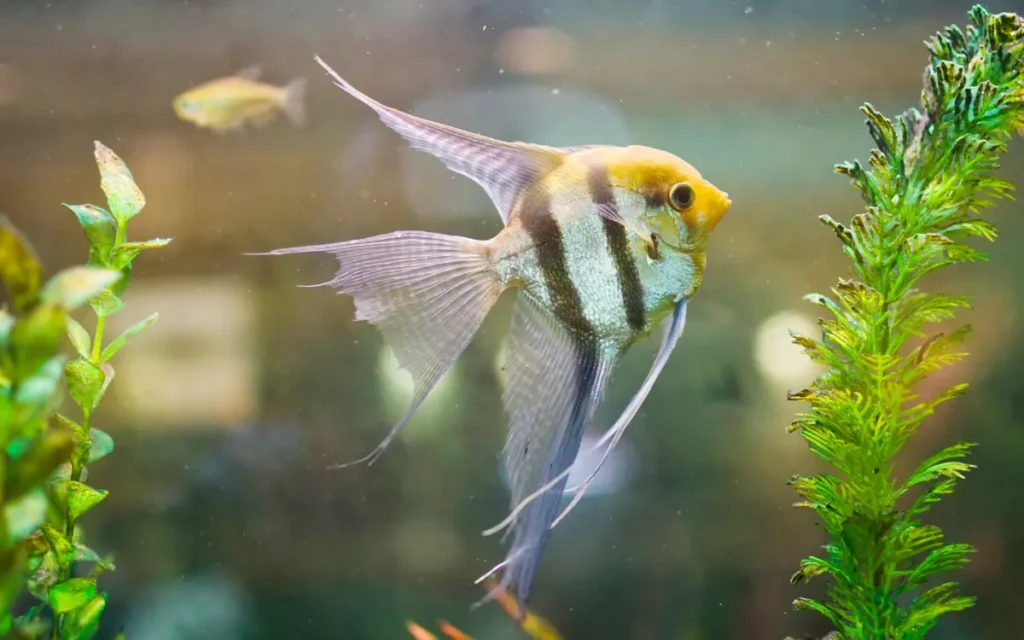
Setting Up the Breeding Tank
Tank Size and Setup
- Size: A separate breeding tank of at least 20 gallons is recommended.
- Substrate: Use a fine substrate or a bare bottom for easy cleaning.
- Plants and Decorations: Include broad-leaf plants or flat surfaces like slate or tiles where Angelfish can lay their eggs.
- Filtration: Use a gentle filter to ensure clean water without disturbing the eggs or fry.
- Temperature: Maintain the water temperature between 80-82°F (27-28°C) to encourage breeding.
Selecting a Breeding Pair
Identifying Pairs
- Angelfish typically form monogamous pairs. You can either let them pair naturally in a community tank or purchase a proven breeding pair.
- Look for signs of pairing behavior such as swimming together and cleaning potential spawning sites.
Conditioning the Pair
- Provide a varied diet rich in protein to condition the pair for breeding. Include live or frozen foods like brine shrimp and bloodworms.
Breeding Process
Spawning
- Once a pair is formed, they will select a spawning site and clean it.
- The female will lay a row of eggs, and the male will follow to fertilize them. This process will continue until hundreds of eggs are laid.
Caring for the Eggs
- Angelfish are attentive parents and will guard and aerate the eggs.
- Remove any unfertilized or fungus-infected eggs to prevent contamination. Unfertilized eggs will turn white.
Hatching and Fry Care
Hatching
- Eggs will typically hatch within 2-3 days, depending on the water temperature.
- The fry will remain attached to the spawning site for another few days, absorbing their yolk sacs.
Feeding Fry
- Once the fry become free-swimming, start feeding them infusoria or commercially available fry food.
- After a week, you can introduce freshly hatched brine shrimp or finely crushed flakes.
General Tips
- Water Quality: Maintain excellent water quality with regular water changes to ensure the health of both the parents and the fry.
- Observation: Regularly observe the behavior of the breeding pair and the condition of the eggs to address any issues promptly.
- Separate Tank: Consider moving the fry to a grow-out tank once they are large enough to avoid predation from the parents or other fish.
FAQs
Do angelfish eat other fish?
Yes, Angelfish can eat smaller fish, especially those that can fit into their mouths. They are known to eat fry and small tank mates, so it’s important to choose compatible tank mates that are not too small.
Are angelfish difficult to keep?
Angelfish are relatively easy to keep with the right care and environment. They require a well-maintained tank with stable water parameters, a balanced diet, and appropriate tank mates. Regular water changes and monitoring are essential for their health.
What fish can live with angelfish?
Angelfish can live with peaceful, similarly sized fish that do not nip fins. Good tank mates include tetras, gouramis, corydoras, catfish, and larger rasboras. Avoid aggressive or very small fish to prevent stress and predation.
How many angelfish should be together?
It’s best to keep Angelfish in groups of at least 4-6 individuals when they are juveniles to prevent aggressive behavior and establish a social hierarchy. As they grow and pair off, you may need to separate pairs into different tanks to avoid territorial disputes.
Angelfish tank mates
Ideal tank mates for Angelfish include:
- Tetras (larger species like Black Skirt Tetras and Cardinal Tetras)
- Gouramis (Dwarf Gouramis, Pearl Gouramis)
- Corydoras Catfish
- Plecos (small species like Bristlenose Plecos)
- Larger Rasboras (such as Scissortail Rasboras) Avoid fin-nipping fish like barbs and aggressive fish that could stress or harm the Angelfish.

